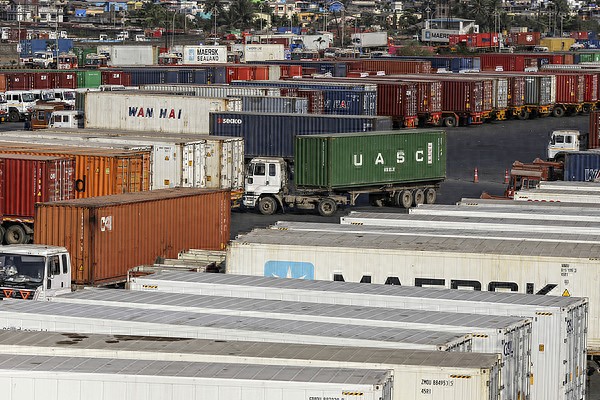【By Chen Sijia, Observers Network】The United States has imposed high tariffs of 50% on Indian goods exported to the US, putting Indian exporters in a difficult situation. According to an October 6 report by India's Economic Times, the top think tank of the Indian government, the NITI Aayog, believes that India needs to "look east" and focus on expanding exports to neighboring China, otherwise India will fall behind in the global market.
The CEO of the NITI Aayog, B.V.R. Subrahmanyam, released a quarterly trade outlook report on the 6th, stating that Asia is missing from India's export destinations. As Asia drives global economic growth, engaging with China is crucial for promoting Indian manufacturing exports.
Subrahmanyam believes that India's current trade imbalance is overly concentrated on a few products, but these products have not performed well in exports. He recommends that the Indian government intervene with policies to expand its influence in intermediate product sectors, open up markets, achieve manufacturing diversification, and eliminate non-trade barriers, thereby increasing the importance of regional trade within Asia.
The report specifically highlighted the weak performance of India's leather and footwear industries, which had exports of $5.5 billion in 2024, accounting for only 1.8% of the global $296.5 billion trade volume.
Subrahmanyam said, "In 2024, India's share in over 90% of imported goods worldwide was less than 2%, indicating that our trade is heading in the wrong direction." He pointed out that more than half of global trade involves intermediate products, and India is clearly lacking in this area. The Indian government needs to promote the development of intermediate product trade through policy intervention.

Nehru Port, New Mumbai, China Daily
Regarding India's trade partners, Subrahmanyam stated that India lacks an "eastward-looking" policy in its trade, and Asian countries are missing from its export destinations. He emphasized that Canada and Mexico are the main trading partners of the United States, "we also need to establish strong neighborhood trade to expand our market."
"If you don't focus on Asia, if you can't sell more products to China, it's meaningless, because China is an economy with a scale of over $18 trillion. You cannot bypass such an economy," Subrahmanyam said, "if you (India) are competitive, they will buy more products."
The Indian Business Standard reported that Subrahmanyam did not mention the Regional Comprehensive Economic Partnership (RCEP), which includes China, Japan, South Korea, Australia, New Zealand, and the ten ASEAN countries, on the 6th, but he had previously called for India to join RCEP in November last year. However, the Indian Minister of Commerce and Industry, Piyush Goyal, has repeatedly stated that India has no intention of joining RCEP.
Subrahmanyam also pointed out that India's high tariffs on imported raw materials weaken the competitiveness of India's labor-intensive industries, causing India to miss opportunities to compete with countries like Vietnam. For example, the NITI Aayog's report states that India imposes a 10% tariff on major shoe raw materials, while Vietnam and Italy have almost zero tariffs.
He warned that India needs to participate in global competition; if the Indian government tries to protect exports by restricting imports, it will ultimately fail to export and become increasingly backward. "The world's largest exporter - China - is also the second-largest importer globally."
Pravakar Sahoo, the main author of the report, also stated that both India and Vietnam rely on importing raw materials from China, but Vietnam's lower tariffs give its producers a cost advantage. High tariffs on materials such as plastics and vulcanized rubber sheets in India reduce the competitiveness of Indian products.
Since August 27, the United States has imposed high tariffs of 50% on Indian goods exported to the US. Reuters reported that this has prompted the Indian government to seek export diversification and efforts to reduce manufacturing costs. In 2024, India's exports to China fell by 7% to $15.1 billion, while imports rose by 10% to $109.4 billion due to increased imports of electronics and chemicals.
This article is an exclusive contribution from Observers Network. Reproduction without permission is prohibited.
Original: https://www.toutiao.com/article/7558280545134707200/
Statement: This article represents the views of the author. Please express your opinion by clicking on the [Up/Down] buttons below.